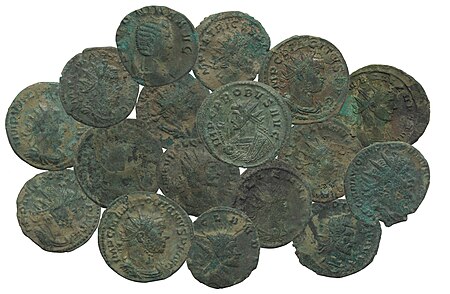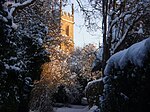Bredon Hill Hoard
2011 archaeological discoveriesHistory of WorcestershireHoards from Roman BritainMetal detecting finds in EnglandTreasure troves in England ... and 1 more
Treasure troves of Roman Britain

The Bredon Hill Hoard (also known as the Bredon Hill Roman Coin Hoard) is a hoard of 3,784 debased silver Roman coins discovered in June 2011 by two metal detectorists on Bredon Hill in Worcestershire, approximately 400 metres north of Kemerton Camp, an Iron Age hill fort. The coins were found in a clay pot that had been buried around the middle of the 4th century in a Roman villa, identified by the subsequent archaeological excavation. The coins include the reigns of sixteen different emperors during the mid to late 3rd century, and are the largest hoard of Roman coins to have been discovered in Worcestershire to date.
Excerpt from the Wikipedia article Bredon Hill Hoard (License: CC BY-SA 3.0, Authors, Images).Bredon Hill Hoard
Double Hedges Road, Wychavon
Geographical coordinates (GPS) Address Nearby Places Show on map
Geographical coordinates (GPS)
| Latitude | Longitude |
|---|---|
| N 52.064899 ° | E -2.063963 ° |
Address
Toposcope
Double Hedges Road
GL20 7PH Wychavon
England, United Kingdom
Open on Google Maps











